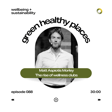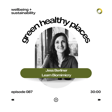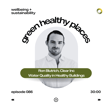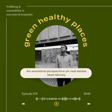
GHP 076: Green healthy offices for Bolton Group headquarters, Milano, IT
Welcome to episode 076 of the Green Healthy Places podcast in which we discuss the the of wellbeing and sustainability in real estate and hospitality today.
I’m your host Matt Morley and in this episode I’m in Milan, Italy but the tables have been turned. This time around I’m on the other side of the microphone, answering the questions.
In front of me is Stefania Lorenzi from the marketing department of the Bolton Group.
This recording took place in their via Pirelli offices, close to the Central Station in Milan, where I’ve been working with their executive team and project architects on implementing a range of green, healthy office strategies over recent months.
The Bolton Group is a family-owned, Italian multinational with over 11,000 employees in 60 different offices.
They are present in 150 countries with over 60 household brands in the portfolio, from products for the home, to food, adhesives, personal care and beauty care.
We discuss the basics of nature-inspired biophilic design, its relationship with sustainability, the benefits of a nature-infused indoor work environment and some tips on how to integrate a little biophilia into our daily routines at home.
This is just a 15-minute chat, nothing complicated but hopefully relevant as a basic primer on the key principles I’m working with when creating a green, healthy office building.
Thanks to the Bolton Group for sharing the audio, this is a company with a strong sustainability program and genuine interest in implementing a healthy building strategy at their company headquarters, so kudos to them!



















